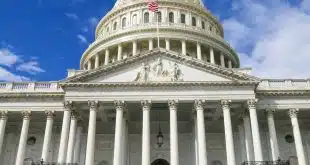Visa USA's decision to enter the contactless payment market represents a major change in strategy at the card association, which up to now had experimented with radio-frequency-based payment overseas but had not seen the U.S. as ripe for the technology. Now, with its announcement last week that it had created a complete platform for contactless transactions, Visa is jumping feet first into a form of electronic payment that many experts see as poised for dramatic growth (Digital Transactions News, Feb. 23). Not lost on Visa is the fact that competing networks, such as MasterCard International and American Express Co., have already rolled out RFID technology in the U.S. and have had some success in winning adoption among high-throughput, cash-intensive merchants, such as McDonald's Corp. “This is as good an opportunity as it gets,” says Patrick Gauthier, senior vice president for product development at Visa. “The time is right, the demand is there.” Merchants and acquirers looking for a break on interchange costs for Visa RFID payments, however, may have to wait a while. In an interview with Digital Transactions News, the Visa executives responsible for the new platform refused to say whether such a pricing break is being contemplated. Visa has in the past offered lower interchange rates to encourage new forms of electronic transactions. Even today it offers a reduction of 5 basis points on interchange to acquirers of Internet transactions when they are secured with Verified by Visa, an authentication system Visa is trying to establish for the Web. Although recent programming advances allow Visa's new platform to track contactless payments separately from mag-stripe swipes, this capability will not be used any time soon for price differentiation. “We're able to singularly change how we treat those transactions,” says Gauthier. “But we've not decided to do anything on that [pricing] level at present. The issues to be solved are more operational, such as deployment.” Visa will not project numbers for issuers, merchants, or transactions on its platform, to which it is not attaching a consumer brand, preferring simply to call it Visa Contactless. MasterCard calls its technology PayPass, and AmEx uses ExpressPay. So-called contactless technology relies on a chip and antenna embedded in a payment device?usually a card but sometimes a keyfob or cell phone?to transmit card-account data to a reader integrated with a card terminal at the point of sale. In this way, consumers can wave or tap the payment device rather than have a cashier swipe a card, speeding up payments. The small-ticket market, where contactless technology is seen as having its greatest potential impact, is an increasingly important one for all electronic transaction networks. Visa USA processed $10.8 billon in credit and signature-debit payments at quick-service outlets last year, for example, an increase of 67% over 2003. These are often tickets under $10. With the card networks waiving signature requirements in certain merchant categories, such transactions were already moving faster before contactless technology was introduced. For example, Visa waives its signature requirement for mag-stripe swipes for tickets under $15 for certain merchants, including fast-food stores. But for Visa Contactless, it has raised its no-signature threshold to $25, with no restriction on merchant type, a change that is likely to increase speed across a broader array of transactions. Still, Visa wasn't always an advocate of contactless technology in the U.S. Last April, for instance, a high-ranking Visa executive all but dismissed RFID payments, arguing they aren't any faster than no-signature mag-stripe swipes and are in some cases slower (Digital Transactions News, April 8, 2004). The change in strategy, Visa executives now say, results from advances in the technology just over the past 12 months. Gauthier says card-personalization and chip-programming techniques now allow for highly efficient, mass production of cards. Also, says Niki Manby, vice president of market and technical innovation at Visa USA, the sheer cost of chips and readers has declined. Gauthier also cites progress MasterCard and AmEx have made with their RFID efforts, which since they operate on the same technical standard helps create a potentially interoperable system. “I don't know that there's been a change of mind [at Visa USA] so much as a shift in the marketplace,” he says. That shift could lead to a new surge of interest in smart cards in the U.S. The smart card concept took a major hit last year when Target Corp. shut down the chip function in an ambitious loyalty program that included millions of cards it had issued with Visa. “The great lesson from previous smart card attempts is you've got walk before you can run,” Gauthier says. “[RFID] opens up a lot of doors, but for now we're trying to keep this simple for all.”
Check Also
The EPC Takes Aim at the CCCA And Illinois’s Interchange Law
The Electronic Payments Coalition has launched the latest salvo in its offensive against legislation seeking …




